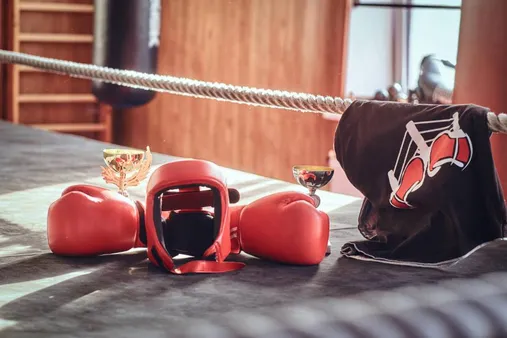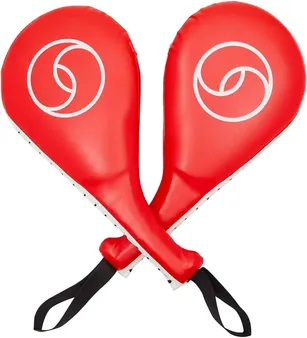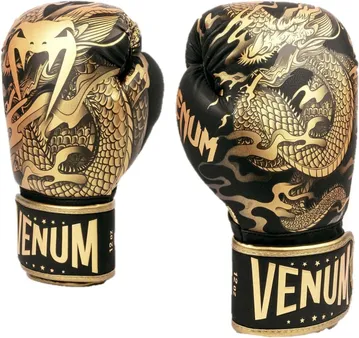Table of Contents
Embark on a journey into the world of martial arts equipment and gear. Whether you're a beginner or an experienced practitioner, having the right gear is essential for safety, performance, and progress. In this comprehensive guide, we'll explore The best martial arts equipment and gear, helping you make informed choices that support your training and enhance your martial arts experience.
Unleash Your Inner Warrior: The Best Martial Arts Equipment and Gear for Absolute Champions
I. Types of Martial Arts Equipment and Gear
When it comes to martial arts, having the appropriate equipment and gear is essential for safety, comfort, and performance.
The type of equipment you'll need will vary depending on the specific martial art you're practicing, but there are some general items that are common to most disciplines.
Uniforms
Martial arts uniforms, also known as gis or doboks, are typically made from lightweight, breathable fabrics like cotton or polyester.
They are designed to allow freedom of movement and to protect the wearer from scratches and bruises.
- Martial Arts Uniforms for Beginners: A Comprehensive Guide
- How to Choose the Right Martial Arts Uniform
Protective Gear
Depending on the martial art you're practicing, you'll also need protective gear. This can include items such as:
- Headgear: Headgear protects the wearer's head from strikes and kicks.
- Mouthguards: Mouthguards protect the wearer's teeth and gums from injury.
- Hand wraps: Hand wraps protect the wearer's hands and wrists from injury.
- Shin guards: Shin guards protect the wearer's shins from kicks.
- Knee pads: Knee pads protect the wearer's knees from strikes and falls.
The Complete Guide to Protective Gear for Martial Arts
Weapons
Some martial arts also involve the use of weapons, such as swords, staffs, or nunchucks.
These weapons are typically made from wood, metal, or plastic, and they can be used for both training and competition.
Weapon | Description |
Sword | A bladed weapon that can be used for cutting, thrusting, and slicing. |
Staff | A long, cylindrical weapon that can be used for striking, blocking, and grappling. |
Nunchucks | Two short, connected sticks that can be used for striking, blocking, and grappling. |
Other Equipment
In addition to the essential items listed above, there are a number of other pieces of equipment that can be useful for martial arts training.
These items can include:
- Training mats: Training mats provide a safe and comfortable surface for practicing martial arts techniques.
- Punching bags: Punching bags are used for practicing striking techniques.
- Sparring gear: Sparring gear includes items such as gloves, headgear, and body protectors. It is used during sparring sessions to protect the participants from injury.
The Ultimate Guide to Martial Arts Equipment and Gear
II. Martial Arts Clothing
Martial Arts Clothing
Choosing the Right Martial Arts Clothing
When choosing martial arts clothing, there are a few things to keep in mind. First, the clothing should be comfortable and allow for a full range of motion. Second, the clothing should be durable and able to withstand the rigors of training. Third, the clothing should be appropriate for the type of martial art being practiced. For example, a karate gi is not suitable for Brazilian jiu-jitsu, and a judo gi is not suitable for taekwondo. How to Choose the Right Martial Art for You
There are many different types of martial arts clothing available, so it is important to do some research to find the right clothing for your needs. You can find martial arts clothing at most sporting goods stores, as well as online. The Benefits of Martial Arts for Physical and Mental Health
Type of Martial Art | Clothing |
|---|---|
Karate | Gi |
Judo | Gi |
Taekwondo | Dobok |
Brazilian Jiu-Jitsu | Rash guard and shorts |
Kung Fu | Wushu uniform |
Benefits of Wearing Martial Arts Clothing
There are many benefits to wearing martial arts clothing. First, the clothing can help to improve your performance. By providing a snug fit and allowing for a full range of motion, martial arts clothing can help you to move more easily and efficiently. Second, the clothing can help to protect you from injury. By providing a barrier between your skin and the mat or other training equipment, martial arts clothing can help to reduce the risk of cuts, bruises, and other injuries. Third, the clothing can help to promote a sense of unity and belonging. By wearing the same clothing as your fellow students, you can feel like part of a team and develop a stronger sense of camaraderie. How to Improve Your Speed, Power, and Agility with Martial Arts
Conclusion
Martial arts clothing is an essential part of any martial arts training program. By choosing the right clothing, you can improve your performance, protect yourself from injury, and promote a sense of unity and belonging. The History and Philosophy of Martial Arts
III. Choosing the Right Equipment and Gear
Choosing the Right Equipment and Gear
Selecting the Best Martial Arts Equipment
Choosing the right martial arts equipment is crucial for safety, comfort, and performance. Consider your martial art style, skill level, and personal preferences when making your selections. For instance, if you're practicing karate, you'll need a gi, while a boxer will require gloves and hand wraps. Always prioritize quality over price, as durable gear will last longer and protect you better.
When selecting martial arts equipment, it's essential to consider your safety. Ensure that your gear fits properly and provides adequate protection. For example, a helmet should fit snugly without obstructing your vision, and gloves should offer sufficient padding to protect your hands. Additionally, choose gear made from high-quality materials that can withstand the rigors of martial arts training.
- Gi: A traditional martial arts uniform consisting of a jacket, pants, and belt.
- Gloves: Protective gear worn on the hands to cushion strikes and protect the knuckles.
- Hand wraps: Fabric or gauze used to wrap around the hands before putting on gloves, providing extra support and protection.
- Shin guards: Protective gear worn on the shins to shield them from kicks.
- Headgear: Protective gear worn on the head to safeguard it from strikes.
Choosing the Right Gear for Different Martial Arts
The type of martial art you practice will determine the specific gear you need. For example, if you're training in Brazilian Jiu-Jitsu, you'll need a gi and a rash guard, while a Muay Thai practitioner will require boxing gloves and shin guards. It's important to choose gear that is specifically designed for your chosen martial art to ensure optimal performance and safety.
When selecting martial arts gear, it's essential to consider your skill level. If you're a beginner, you may want to start with basic gear that provides adequate protection. As you progress in your training, you can invest in more specialized and high-quality gear to enhance your performance.
Considering Personal Preferences
In addition to safety and functionality, it's also important to consider your personal preferences when choosing martial arts equipment. For instance, some people prefer gis made from lightweight materials, while others prefer heavier gis that provide more structure. Similarly, some people prefer gloves with extra padding, while others prefer gloves that offer a better fit and feel.
Ultimately, the best martial arts equipment is the gear that you feel comfortable and confident in. Take the time to try out different options and choose the gear that best suits your needs and preferences. With the right equipment, you'll be able to train safely and effectively, and you'll be more likely to enjoy your martial arts journey.
Martial Art | Essential Gear |
|---|---|
Karate | Gi, belt, hand wraps, gloves |
Boxing | Gloves, hand wraps, headgear, mouthguard |
Brazilian Jiu-Jitsu | Gi, rash guard, spats, mouthguard |
Muay Thai | Boxing gloves, shin guards, hand wraps, mouthguard |
Taekwondo | Dobok, belt, hand guards, foot guards, headgear |
IV. Safety Precaution When Using Martial Arts Equipment and Gear
Equipment | Safety Precaution |
|---|---|
Martial arts mats | Ensure mats are thick enough to provide adequate cushioning and prevent injuries. |
Punching bags | Hang punching bags securely to prevent them from falling and causing harm. |
Sparring gear | Wear proper sparring gear such as gloves, headgear, mouthguards, and shin guards to protect yourself from injury. |
Weapons | Handle weapons with care and avoid horseplay to prevent accidental injury. |
When practicing martial arts, it's crucial to take safety precautions to prevent injuries and ensure a positive experience. Here are some tips for using martial arts equipment and gear safely:
- Choose the right martial arts equipment and gear: Make sure the equipment fits properly and is of good quality. Consider factors such as the type of martial art you're practicing, your skill level, and your personal preferences.
- Inspect your equipment regularly: Check your equipment for wear and tear before each use. Replace any damaged or worn-out equipment to prevent accidents.
- Use equipment safely: Follow the manufacturer's instructions for using the equipment correctly. Avoid using equipment for purposes other than what it's intended for.
- Be aware of your surroundings: Pay attention to your surroundings when using martial arts equipment. Be mindful of other people and avoid causing injury to yourself or others.
- Train with a qualified martial arts instructor: Taking classes from a qualified instructor can help you learn the proper techniques for using martial arts equipment and gear safely.
By following these safety precautions, you can help minimize the risk of injuries and make your martial arts training more enjoyable and rewarding.
When using martial arts equipment and gear, safety should always be your top priority. By taking the necessary precautions, you can help prevent injuries and ensure that your training is both productive and enjoyable.
See The Best Martial Arts Equipment and Gear for more information on choosing and using martial arts equipment and gear safely.